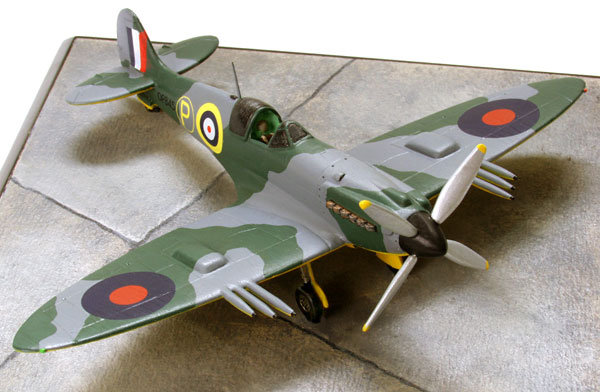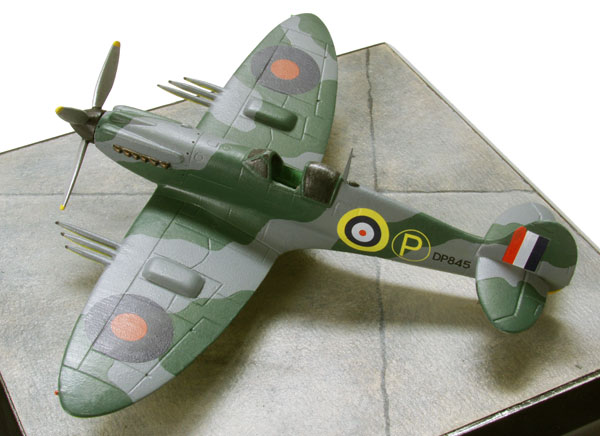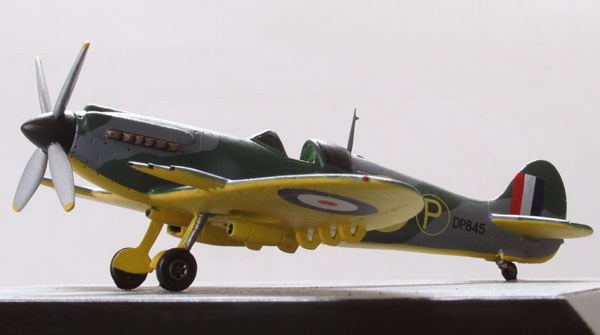Supermarine Spitfire Mk IV
Supermarine Spitfire Mk IV DP845 (Later Mk XX, and Mk XII)
Supermarine and A.&A.E.E. Worthy Down & Boscombe Down, 1941-45.
While there was some interest in replacing the Rolls-Royce Merlin in the Supermarine Spitfire with a bigger engine as early as 1938, it wasn’t until 1941 that the Air Ministry pursued the idea with enthusiasm issuing Specification F.4/41 tailored to the new version, although a verbal instruction to start the design process had been issued by Sir Wilfred Freeman, the Air Council member for Research and Development, early in 1940. The engine that Supermarine and Rolls-Royce proposed was the Griffon, which originated as a “de-rated” ‘R’ engine the power unit of the Schneider Trophy winning S.6B floatplane. The new engine was a third bigger than the Merlin – 37 litres compared with 27 – but was physically small enough to fit the basic Spitfire airframe with only small modifications.
The first of two prototypes known initially as the Spitfire Mk IV, DP845 first flew on 27 November 1941 in the hands of Jeffrey Quill, the Supermarine test pilot who was to carry out much of the development work on the type. While based on the Spitfire Mk I, it had the bulged fairings along the nose above the exhausts that were to become a characteristic of Griffon Spitfires, to minimise the effect of the bigger engine on the pilot’s forward view. During its career its retractable tailwheel was replaced with the more usual fixed type, and it was fitted with a larger rudder and eventually a redesigned tail unit to counter the greater torque from the Griffon; for a while it carried a mock-up installation for six 20 mm. cannon, but it reverted to the more usual two cannon and four machine guns.
It spent all its life carrying out development tasks in the hands of manufacturers Supermarine and with the Aeroplane and Armament Experimental Establishment at Boscombe Down, flying at some time with the “clipped” wings that were a feature of the resultant production Spitfire Mk XII; the type was renumbered to avoid confusion with the PR Mk IV, and was known for a while as the Mk.XX. In one of its trials it reached 450 mph. in a dive. It survived until 1946, when it was in the hands of No.1 MPRD at Cowley.
DP845’s day in the spotlight was 20 July 1942 at Farnborough, where a competitive trial with a Hawker Typhoon and a captured Focke-Wulf Fw 190 (for which its captors had considerable regard) was organised, and in the hands of Jeffery Quill the Spitfire outperformed them both in the required race, somewhat to the surprise of the sponsors!
Scale 1:72 Wingspan 6.25″ (156 mm)
Base size 6.2″ (156 mm)
Weight not including base 7.5 ozs (210 grams) Limited edition of 100 only




